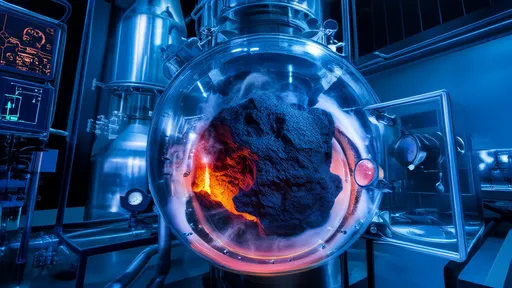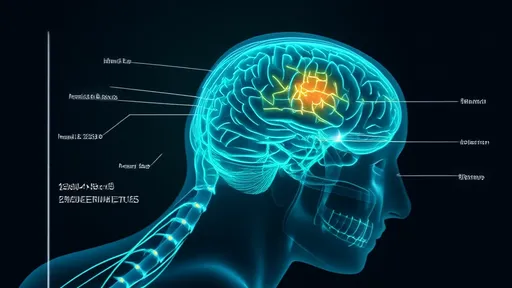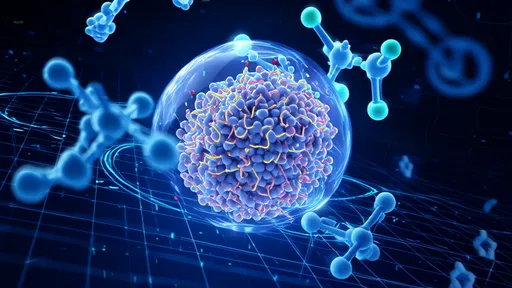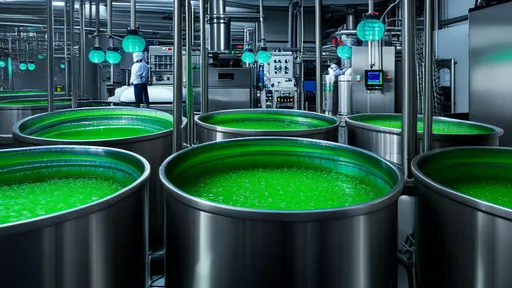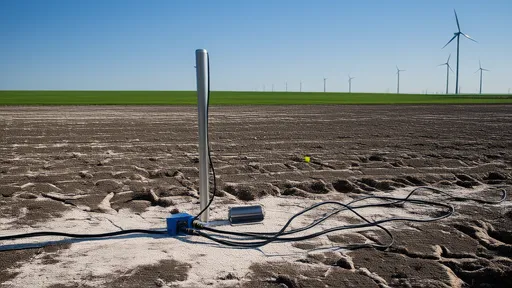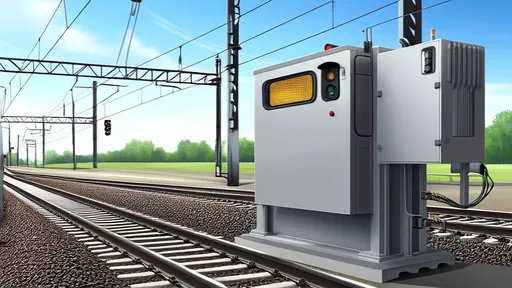The concept of piezoelectric railways is revolutionizing the way we think about sustainable energy in transportation. By converting the mechanical energy from train-induced vibrations into electrical power, these systems offer a promising solution for reducing dependency on external power sources. The technology leverages piezoelectric materials, which generate electricity when subjected to mechanical stress, embedding them directly into railway tracks. This innovation not only enhances energy efficiency but also aligns with global efforts to combat climate change by minimizing carbon footprints.
How Piezoelectric Railways Work
At the heart of this technology lies the piezoelectric effect, a phenomenon where certain materials produce an electric charge in response to applied mechanical stress. In the context of railways, piezoelectric transducers are installed along the tracks. As trains pass over these transducers, the weight and movement of the vehicles create vibrations that compress the piezoelectric elements. This compression generates electricity, which can then be stored in batteries or fed directly into the grid. The process is entirely passive, requiring no additional energy input, making it a highly efficient method of energy harvesting.
The potential of piezoelectric railways extends beyond mere energy generation. These systems can also serve as a supplementary power source for railway infrastructure, such as signaling systems, lighting, and even onboard train functions. By integrating energy-harvesting technologies into existing rail networks, operators can significantly reduce operational costs and enhance the sustainability of their services. Moreover, the scalability of piezoelectric systems allows for deployment in both urban and rural settings, making them a versatile solution for diverse railway environments.
Challenges and Future Prospects
Despite their promise, piezoelectric railways face several challenges that must be addressed to achieve widespread adoption. One of the primary hurdles is the relatively low energy output compared to traditional power sources. While piezoelectric materials are efficient at converting mechanical energy into electricity, the amount of power generated per transducer is modest. This necessitates the installation of large numbers of transducers to achieve meaningful energy yields, which can be costly and logistically complex.
Another challenge lies in the durability and maintenance of piezoelectric systems. Railway tracks are subjected to extreme conditions, including heavy loads, temperature fluctuations, and environmental wear. Ensuring that piezoelectric transducers can withstand these conditions over long periods is critical for the viability of the technology. Researchers are actively exploring advanced materials and designs to improve the resilience and longevity of these systems.
Looking ahead, the future of piezoelectric railways appears bright. Advances in material science and engineering are expected to enhance the efficiency and reliability of piezoelectric energy harvesting. Additionally, growing interest from governments and private investors in sustainable infrastructure projects is likely to accelerate the development and deployment of these systems. As the technology matures, piezoelectric railways could become a cornerstone of green transportation, contributing to a more sustainable and energy-independent future.
Environmental and Economic Benefits
The environmental benefits of piezoelectric railways are substantial. By harnessing energy that would otherwise be wasted as heat and vibration, these systems help reduce the overall energy consumption of rail networks. This not only lowers greenhouse gas emissions but also decreases the reliance on fossil fuels. In regions where renewable energy sources are scarce, piezoelectric railways can provide a localized and sustainable power solution, further diversifying the energy mix.
From an economic perspective, piezoelectric railways offer long-term cost savings. While the initial investment in piezoelectric transducers and associated infrastructure may be high, the reduction in energy costs over time can offset these expenses. Furthermore, the ability to generate power on-site reduces the need for extensive grid connections, which can be particularly advantageous in remote or underserved areas. As energy prices continue to rise, the financial case for piezoelectric railways becomes increasingly compelling.
The integration of piezoelectric technology into railways also opens up new opportunities for innovation. For instance, smart grids could be developed to optimize the distribution and utilization of harvested energy. Data collected from piezoelectric sensors could also be used to monitor track conditions and predict maintenance needs, enhancing the safety and efficiency of rail operations. These ancillary benefits further underscore the transformative potential of piezoelectric railways.
Global Initiatives and Pilot Projects
Around the world, several pilot projects and initiatives are exploring the feasibility of piezoelectric railways. In Japan, researchers have tested piezoelectric systems in subway stations, demonstrating their ability to power lighting and other low-energy devices. Similarly, European countries like the UK and Germany are investing in research to integrate piezoelectric technology into their rail networks. These efforts are supported by collaborations between academic institutions, industry leaders, and government agencies, highlighting the collective interest in advancing this technology.
In the United States, startups and established companies alike are entering the piezoelectric space, developing innovative solutions tailored to the unique demands of North American railways. These initiatives are often complemented by policy measures aimed at promoting renewable energy and sustainable infrastructure. As more pilot projects yield positive results, the momentum behind piezoelectric railways is expected to grow, paving the way for larger-scale implementations.
The global push toward decarbonization and energy independence is a key driver behind the interest in piezoelectric railways. With transportation accounting for a significant portion of worldwide energy consumption, solutions that can make rail systems more sustainable are in high demand. Piezoelectric technology, with its ability to turn everyday train operations into a source of clean energy, is well-positioned to play a pivotal role in this transition.
Conclusion
Piezoelectric railways represent a groundbreaking convergence of sustainability and innovation. By tapping into the untapped energy of train vibrations, these systems offer a practical and eco-friendly way to power rail networks. While challenges remain, ongoing research and pilot projects are steadily overcoming these obstacles, bringing the vision of self-powered railways closer to reality. As the world continues to seek out renewable energy solutions, piezoelectric technology stands out as a promising avenue for reducing emissions, cutting costs, and enhancing the resilience of transportation infrastructure. The journey toward piezoelectric railways is just beginning, but the destination—a greener, more efficient future—is clearly in sight.
The rhythmic lapping of brackish water against tangled mangrove roots conceals one of nature's most extraordinary genetic survival stories. For centuries, these salt-tolerant trees have guarded molecular secrets in their DNA that allow them to thrive where other plants perish. Today, scientists are cracking open this genetic vault through an ambitious international initiative called the Mangrove Gene Bank Project, with groundbreaking implications for global food security.
In the face of accelerating glacial melt due to climate change, scientists and engineers are turning to innovative solutions to slow the disappearance of these critical ice reserves. One such breakthrough is the development of high-albedo fabric covers, colloquially termed "glacial nanoblankets," designed to reflect sunlight and reduce ice ablation. These advanced textiles are emerging as a promising tool in the fight against rising sea levels and ecosystem disruption.
In the race to mitigate climate change, scientists and engineers are turning to the Earth’s own geological processes for solutions. One of the most promising avenues is basalt carbon mineralization, a natural chemical reaction that locks away carbon dioxide in solid rock. This process, often described as nature’s own carbon capture and storage (CCS) system, is now being harnessed and accelerated to combat rising atmospheric CO₂ levels. Unlike traditional carbon storage methods, which rely on fragile seals and uncertain long-term stability, basalt mineralization offers a permanent and geologically secure solution.
The concept of marine cloud brightening through aerosol seeding has emerged as a potential geoengineering strategy to combat global warming. By enhancing the reflectivity of clouds over oceans, scientists aim to increase Earth's albedo, thereby cooling the planet. This approach, while still in experimental stages, has garnered significant attention due to its promise of offsetting some effects of climate change without requiring drastic reductions in greenhouse gas emissions.
For decades, the study of chronic pain has been hampered by the inability to observe neural activity over extended periods. Traditional imaging techniques provide snapshots of brain activity but fail to capture the dynamic, evolving nature of pain processing. A groundbreaking approach using transparent skull implants is now revolutionizing our understanding of how chronic pain manifests and persists in the brain.
In the perpetual darkness of the deep sea, hydrothermal vents spew superheated, mineral-rich fluids into the frigid water, creating oases of extreme chemistry that have fascinated scientists for decades. These underwater geysers, often located along mid-ocean ridges, host complex reactions that may hold clues to the origins of life and the formation of mineral deposits. Until recently, studying these dynamic systems in their natural state posed immense challenges—until the advent of deep-sea chemical robots capable of in situ monitoring.
In a groundbreaking development that merges cutting-edge physics with ancient archaeology, researchers have successfully utilized neutron holography to reveal hidden inscriptions beneath the patina of bronze artifacts. This non-invasive technique promises to revolutionize the study of corroded metal objects, offering unprecedented access to historical texts without damaging delicate surfaces.
The advent of cryo-electron microscopy (cryo-EM) coupled with artificial intelligence (AI) has revolutionized the field of structural biology. By capturing the intricate dance of proteins in their native states, scientists are now able to unravel the dynamic architectures that govern cellular functions. This powerful synergy between cutting-edge imaging and machine learning is not just a technological leap—it’s a paradigm shift in understanding life at the molecular level.
The world of ultrafast spectroscopy has entered a revolutionary phase with the advent of attosecond spectral knives—a cutting-edge tool that enables scientists to selectively excite specific vibrational states in molecules. This breakthrough technology is reshaping our understanding of molecular dynamics and opening new frontiers in chemical reaction control. Unlike conventional methods that often excite molecules indiscriminately, attosecond spectral knives offer unprecedented precision by targeting individual quantum states with laser pulses lasting mere billionths of a billionth of a second.
The global food system is undergoing a quiet revolution, one fermentation tank at a time. In laboratories and production facilities around the world, scientists and entrepreneurs are harnessing the power of microalgae to create what many believe could become the protein source of the future. These microscopic photosynthetic organisms, grown in controlled fermentation environments, are demonstrating remarkable potential to address some of our most pressing nutritional and environmental challenges.
The agricultural sector is undergoing a quiet revolution as artificial intelligence merges with robotics to address one of nature's most vital processes: pollination. In fields across the world, experimental deployments of mechanical pollinator swarms are demonstrating how AI-driven vision systems can collaborate to mimic—and potentially enhance—the work of vanishing bee populations. These autonomous systems represent not just a technological breakthrough, but a necessary adaptation to ecological instability.
For decades, farmers and land reclamation specialists have struggled with the persistent challenge of saline-alkali soils - those unproductive lands where high salt concentrations and alkaline pH levels stunt plant growth and render vast areas agriculturally useless. Traditional remediation methods often proved either too slow, too expensive, or too water-intensive to implement at scale. Now, an innovative electrochemical approach using pulsed electric fields is demonstrating remarkable potential to transform these barren landscapes into fertile ground.
In the rolling hills of Colombia's coffee belt, a quiet revolution is taking place beneath the emerald canopies of coffee plants. Researchers are conducting groundbreaking field trials with genetically edited coffee plants designed to grow beans naturally low in caffeine. This ambitious project could forever change how the world consumes its most popular psychoactive beverage.
For centuries, the intricate world beneath our feet remained largely a mystery. Farmers, ecologists, and biologists could only speculate about the complex interactions between plant roots and soil structure. Traditional methods of studying root systems involved destructive sampling—digging up plants and washing away soil to examine roots. This approach not only killed the plants but also disrupted the very soil architecture researchers sought to understand. However, a quiet revolution in agricultural science is changing everything.
The concept of piezoelectric railways is revolutionizing the way we think about sustainable energy in transportation. By converting the mechanical energy from train-induced vibrations into electrical power, these systems offer a promising solution for reducing dependency on external power sources. The technology leverages piezoelectric materials, which generate electricity when subjected to mechanical stress, embedding them directly into railway tracks. This innovation not only enhances energy efficiency but also aligns with global efforts to combat climate change by minimizing carbon footprints.


